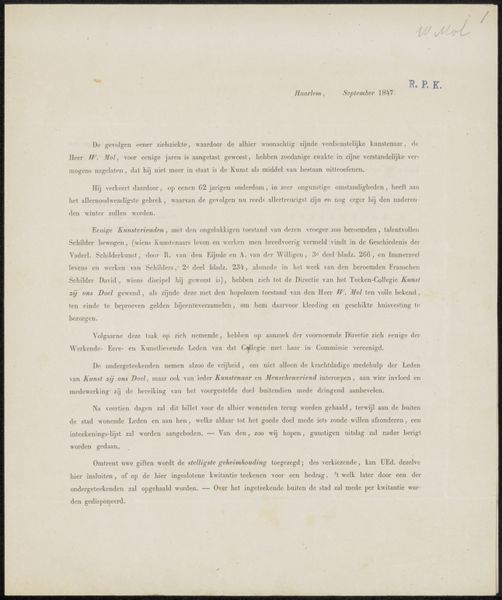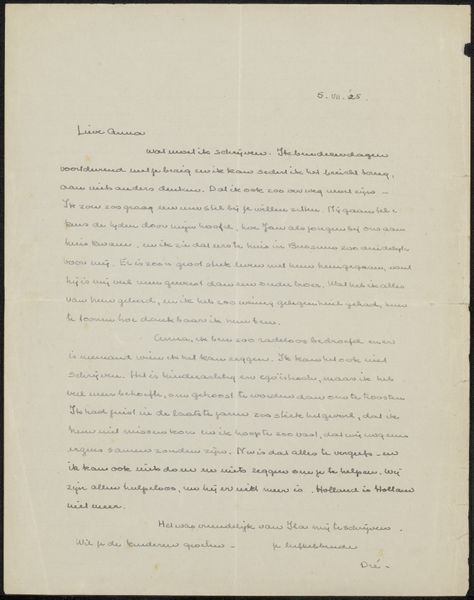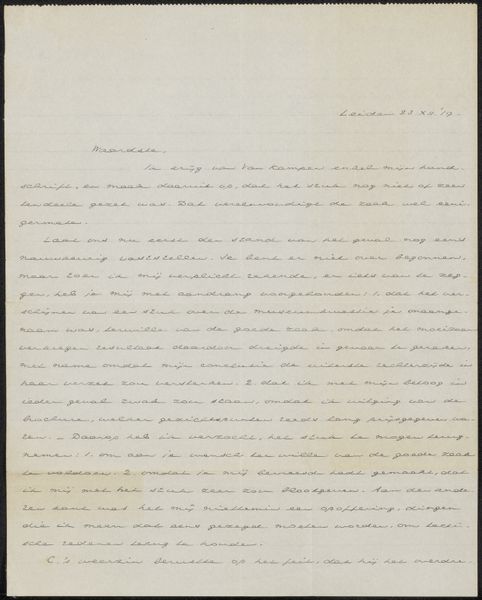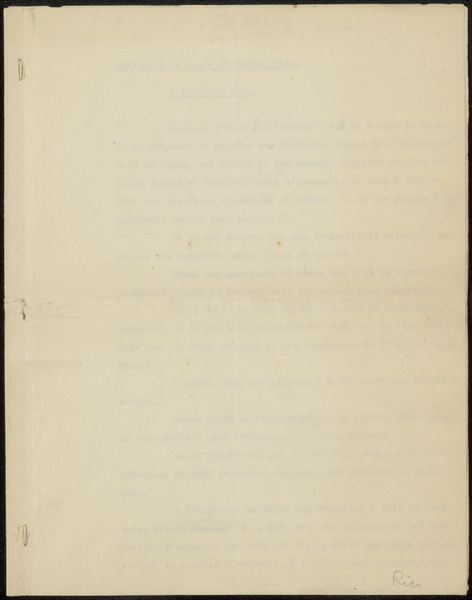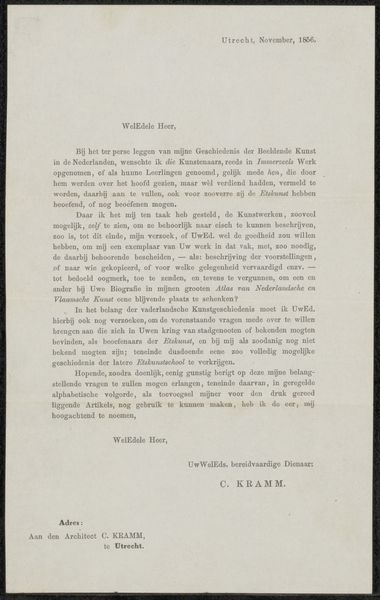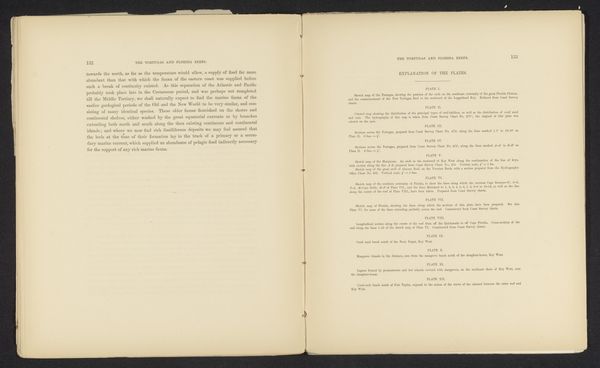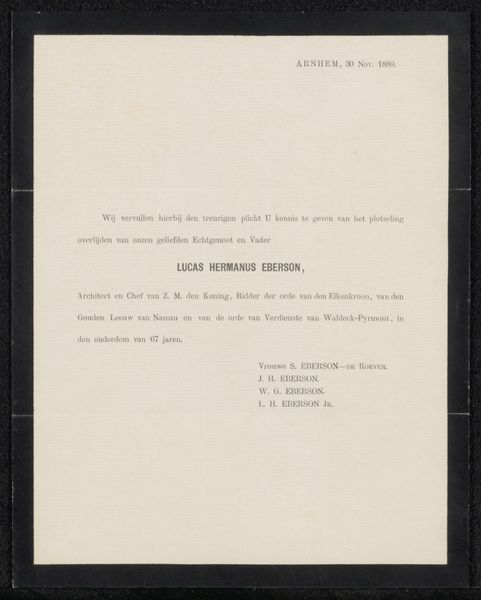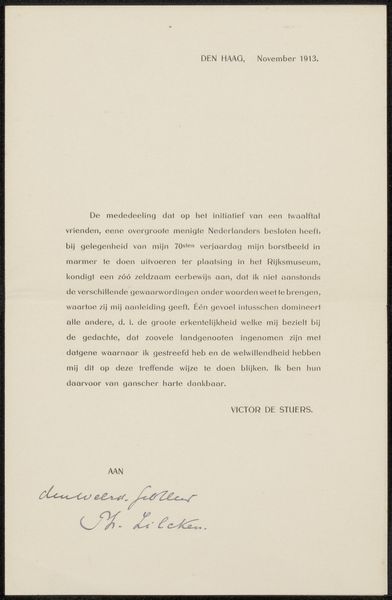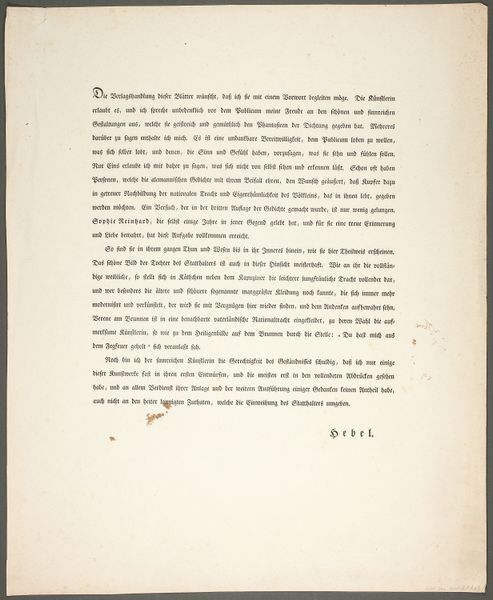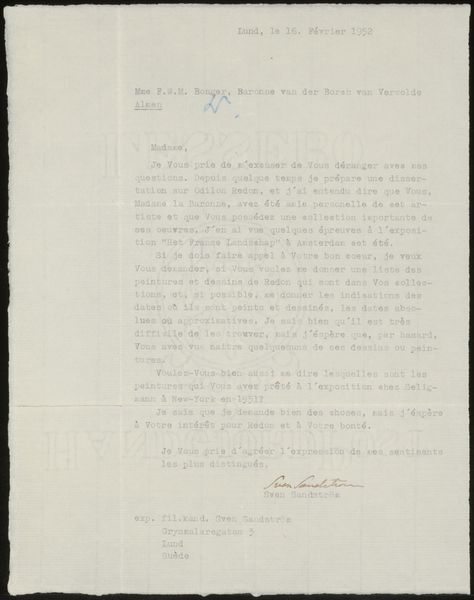
graphic-art, print, paper, typography
graphic-art
sand serif
aged paper
ink paper printed
old engraving style
hand drawn type
paper
typography
hand-drawn typeface
thick font
handwritten font
historical font
columned text
Copyright: Rijks Museum: Open Domain
Editor: Here we have "Circulaire betreffende Wouterus Mol," created sometime between 1847 and 1849 by diverse vervaardigers, or various makers. It seems to be a printed document on aged paper, perhaps a public announcement. I am curious about its original function and what strikes you most about this piece? Curator: This is a compelling artifact when we consider its production and dissemination. The printed text, the choice of typography, and the aged paper all speak to a specific mode of communication prevalent in the mid-19th century. Think about the labour involved: the typesetters, the printers, the paper manufacturers. Editor: So, you're saying that its value lies in its making, its social context rather than just aesthetics? Curator: Precisely. This isn’t just information; it's a material object produced under certain socio-economic conditions. Who was Wouterus Mol, and why was a circular necessary? Considering the hand-drawn typeface; were they trying to add legitimacy and visual distinction in a world before mass standardization of print? Editor: That's fascinating! The "aged paper" isn't just a sign of age but an indicator of the material used and therefore of resources and costs at the time. And now that I read the text more carefully, I see a mention of gathering funds. Curator: Indeed. The document functions as more than just text; it is an economic engine; an active appeal in a social and artistic network, driving cultural and economic life, of which print production was an integral part. Editor: I never considered typography as an active driver in that sense. This approach really transforms how I think about even seemingly simple documents. Curator: Seeing the means of production allows us to view beyond mere aesthetic or informational value to discover social and economic contexts.
Comments
No comments
Be the first to comment and join the conversation on the ultimate creative platform.
